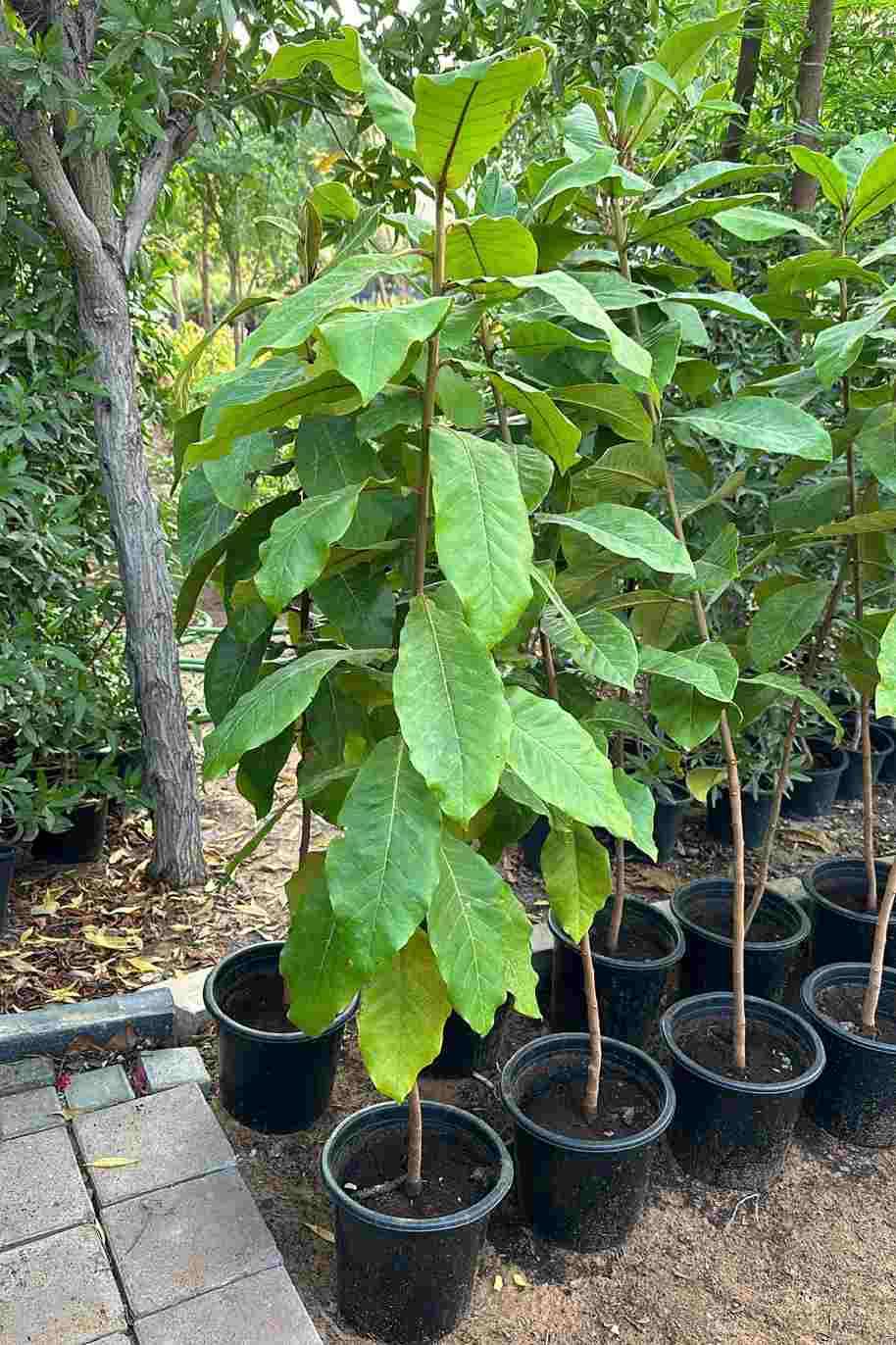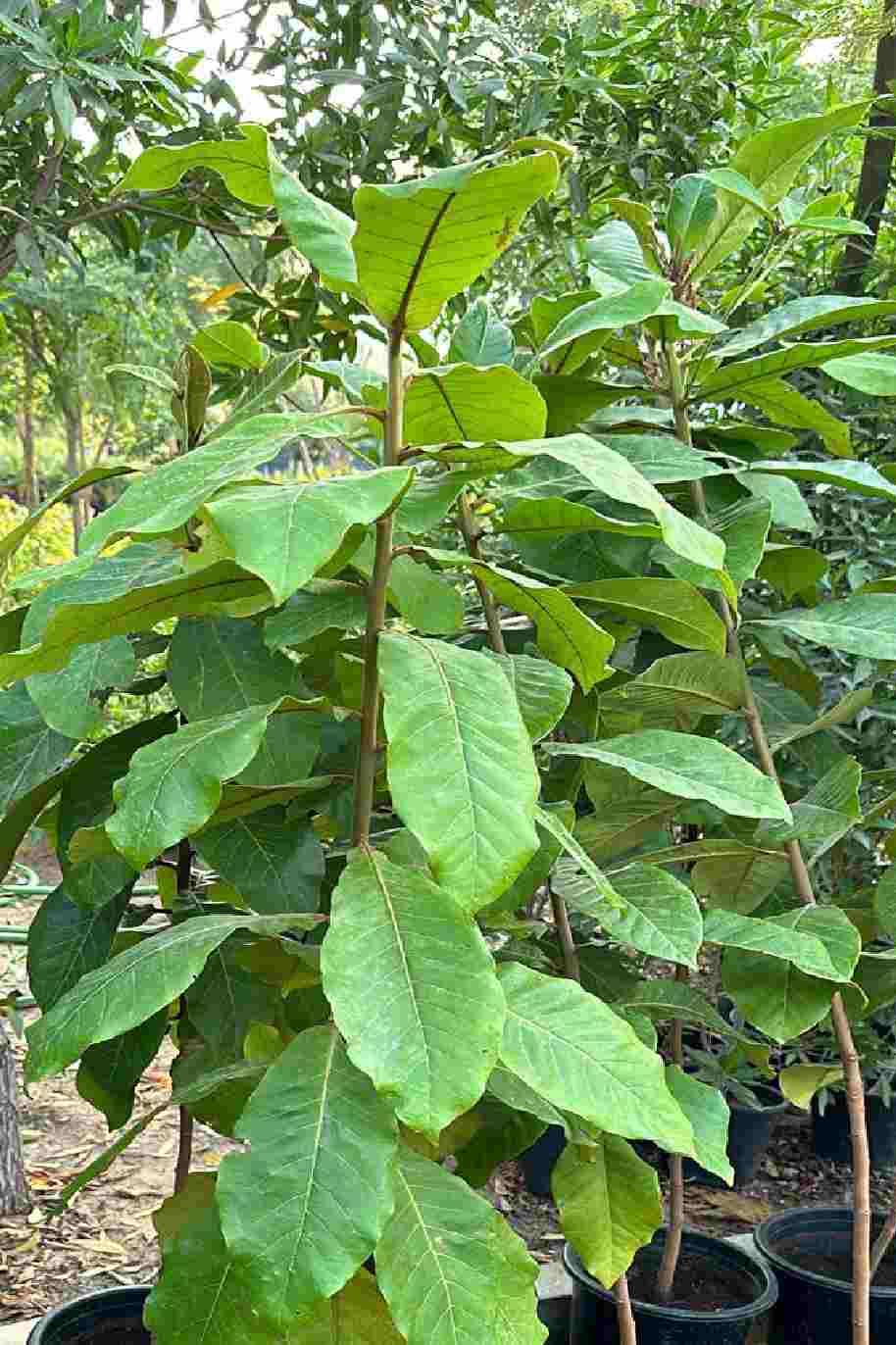Plant Bio
Indian Almond, scientifically known as Terminalia catappa, is a tropical tree known for its attractive appearance, broad leaves, and the unique shape of its nuts. Here's a description of the Indian Almond tree:
Leaves: Indian Almond trees have large, leathery leaves that are broad and oval in shape. They are typically green but can turn various shades of yellow and red before falling in the autumn, creating a colorful display.
Fruit: The tree produces a fruit that is often referred to as an "almond" due to its shape, but it is not related to the true almond tree (Prunus dulcis). The fruit is woody, and when mature, it splits open to reveal a single seed or nut. The nut inside is edible and is often used in traditional dishes in some regions.
Flowers: Indian Almond trees bear small, inconspicuous flowers that are typically greenish-white and appear in clusters. The flowers are not particularly showy but contribute to the tree's overall beauty.
Growth Habit: Terminalia catappa is a medium-sized to large tree that can reach heights of 30 to 80 feet (9 to 24 meters). It has a rounded canopy and a spreading growth habit.
Care:
Sunlight: Indian Almond trees thrive in full sun, meaning they require at least 6 to 8 hours of direct sunlight each day. Ensure they are planted in a location with plenty of sunlight exposure.
Climate: These trees are tropical and subtropical in nature, so they require warm temperatures to thrive. They are not frost-tolerant and should be protected from freezing temperatures.
Soil: Plant Indian Almond trees in well-draining soil that is rich in organic matter. They can tolerate a variety of soil types, including sandy and loamy soils.
Watering: While young trees need regular watering to establish their root systems, mature Indian Almond trees are relatively drought-tolerant. Water deeply and allow the soil to dry out between waterings.
Fertilization: Fertilize your Indian Almond tree with a balanced, slow-release fertilizer in the spring and early summer to promote healthy growth and flowering.
Pruning: Prune the tree as needed to maintain its shape, remove dead or diseased branches, and improve air circulation. Pruning can be done in late winter or early spring before new growth begins.
Pests and Diseases: Indian Almond trees are generally resistant to most pests and diseases. However, they can occasionally be affected by common garden pests like aphids or scale insects. Inspect your tree regularly and treat infestations promptly.
Propagation: Indian Almond trees can be propagated from seeds or cuttings. If you plan to grow one from seed, soak the seed in water for a day before planting to improve germination rates.
Indian Almond trees are valued not only for their beauty but also for their cultural and culinary significance in some regions. If you live in a suitable climate and provide the necessary care, you can enjoy the shade and aesthetics of this tropical tree in your garden.









